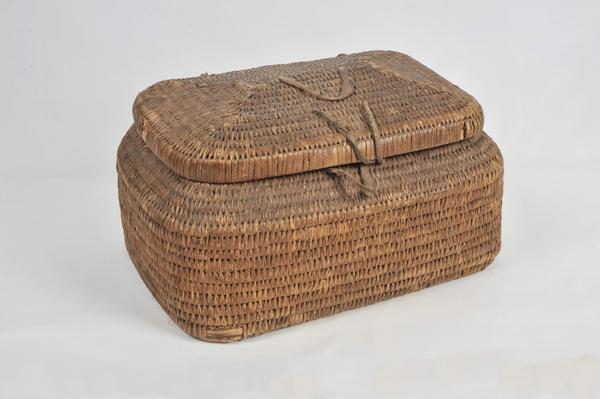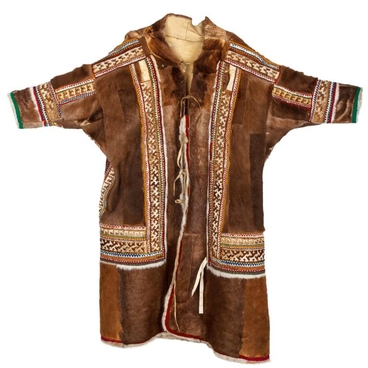Kornevatik is a traditional wicker box. Such boxes were traditionally made by the artisans of the Ob Finno-Ugric peoples, the Khanty and Mansi in particular. Kornevatiks were used for storing dry food and small items.
To make kornevatiks, the roots of young cedars were usually used, since they were much more elastic and durable than the roots of other trees.
In the past, cedar roots were also used in the construction of houses, making fishing traps and household utensils. The roots were gathered in the warm season and stored for the future.
To make kornevatiks, the roots of young cedars were usually used, since they were much more elastic and durable than the roots of other trees.
In the past, cedar roots were also used in the construction of houses, making fishing traps and household utensils. The roots were gathered in the warm season and stored for the future.
Artisans used wet roots soaked in water. After this, the material became soft and elastic, easily stretched, bent, and pierced, without any cracks.
To make the ‘ribbons’, from which the kornevatik was woven, the cedar roots were split into four parts. Then, several thin layers were separated from the outer part of the wood. They were cleaned and, if necessary, divided into narrower ribbons. After that, the cedar root, rolled into coils, was dried and stored.
The kornevatik was made by twisting a bird cherry sprig with the ribbons from a cedar root. The weaving technique consisted in pulling the tape into the hole made by an awl on the above row. Then, it was necessary to pull it tight so that the box had no gaps after it dried. Making kornevatiks required a lot of physical effort. That is why this time-consuming process was traditionally considered a man’s work.
The shape of a kornevatik could be round or rectangular, depending on the form of the rod base. A lid was woven separately and was tied with rawhide straps. The handle for carrying the box was also made of the same straps.
Kornevatiks are housed in the museums of the Khanty-Mansi Okrug-Yugra. Nowadays, local craftsmen are reviving this ancient craft. In 2010, the kornevatik was nominated for the title of one of the wonders of the Finno-Ugric world.
The exhibition of the “Ethnocultural Center” presents a kornevatik made from cedar root using “rovduga” (tanned deerskin) in the middle of the 20th century in the village of Kazym in the Beloyarsky district of Ugra.
To make the ‘ribbons’, from which the kornevatik was woven, the cedar roots were split into four parts. Then, several thin layers were separated from the outer part of the wood. They were cleaned and, if necessary, divided into narrower ribbons. After that, the cedar root, rolled into coils, was dried and stored.
The kornevatik was made by twisting a bird cherry sprig with the ribbons from a cedar root. The weaving technique consisted in pulling the tape into the hole made by an awl on the above row. Then, it was necessary to pull it tight so that the box had no gaps after it dried. Making kornevatiks required a lot of physical effort. That is why this time-consuming process was traditionally considered a man’s work.
The shape of a kornevatik could be round or rectangular, depending on the form of the rod base. A lid was woven separately and was tied with rawhide straps. The handle for carrying the box was also made of the same straps.
Kornevatiks are housed in the museums of the Khanty-Mansi Okrug-Yugra. Nowadays, local craftsmen are reviving this ancient craft. In 2010, the kornevatik was nominated for the title of one of the wonders of the Finno-Ugric world.
The exhibition of the “Ethnocultural Center” presents a kornevatik made from cedar root using “rovduga” (tanned deerskin) in the middle of the 20th century in the village of Kazym in the Beloyarsky district of Ugra.



